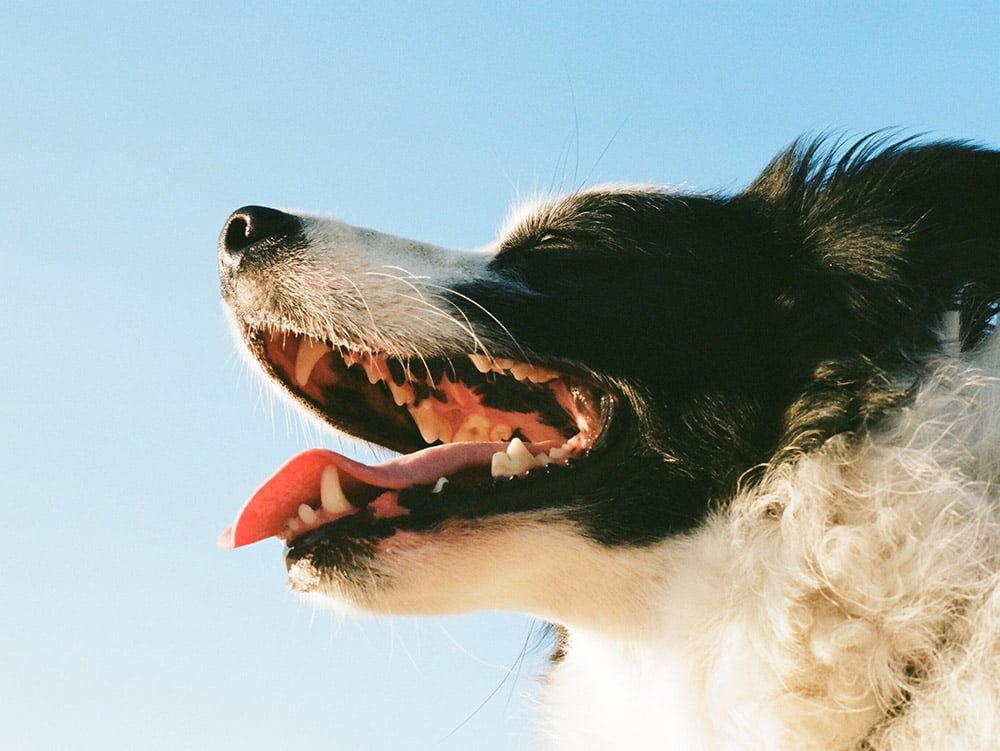Looking after your pet’s teeth is vital for its overall health and wellbeing. Whether they’re puppies or elderly, a pet’s teeth can be affected by many different issues. But don’t worry – there are many ways you can help your pet to have healthy and strong teeth for its entire life, both at home and with your vet’s help.
Puppies’ teeth come in at around three of four weeks of age. They begin with 28 temporary teeth, which eventually will be replaced by 42 permanent teeth. Just as you would try to look after your own or your child’s teeth, it’s important not to forget about your four-legged friend, as tooth issues do still affect them.
Dental health warning signs in pets
Like with our own teeth, there are often some warning signs that not everything is right. But of course, your pet can’t tell you that something is wrong, so you need to be more proactive. Some of the warning signs include:
– bad breath, which can indicate gingivitis (gum disease), a reddening and swelling of the gums caused by a bacterial infection and poor oral hygiene. If untreated, it can lead to tooth loss. Bad breath could also be caused by rotting food stuck to teeth, so regularly checking your pet’s teeth to make sure they’re clear of any stuck food is important.
– yellow teeth, which is often caused by plaque build-up. Plaque is a yellow substance that forms on the teeth after eating. If the teeth aren’t cleaned properly, the plaque can harden on the teeth and cause cavities. If left unchecked, the cavities can rot, which will lead to pain and eventual loss of the tooth.
– red gums/bleeding, which is a sign of infection, often accompanied by pain. If your pet seems to be in pain whilst eating and blood is visible, then make sure it is checked immediately by your vet.
Diet
A diet of only wet foods can cause many dental problems for your pet. This is because wet foods promote a greater build-up of plaque than dry foods. The benefit of dry food is that it stops plaque sticking to the teeth, as wet food is more prone to stick to the teeth, as well as in crevices between teeth.
Many dry foods available on the market have been specially formulated to act like toothpaste, essentially cleaning the teeth as your pet eats. If your pet has a balanced diet of dry food, then wet food usually won’t be necessary.
Consult your vet about your pet’s dietary needs as it pertains to its dental health.
Brushing
Just as humans need to brush their teeth daily, it’s important to brush your pet’s teeth regularly, too. pet-specific toothpaste and toothbrushes with soft bristles are available that will make your job much easier – even if your pet isn’t such a fan of having its teeth brushed. Under no circumstances should you use toothpaste for humans with your pet, as it can be toxic for animals. (here is a link to other common pet toxins)
To make your pet more comfortable with the idea of brushing, you can squeeze some toothpaste onto your finger and let it sniff it – if it doesn’t like it, then don’t stress – there are many different types available.
Use circular motions with the toothbrush and make sure you get to every tooth, at the front and back, as well as the gum line. Make sure to be gentle, and the earlier you start this routine, the better, as your pet will become more comfortable with it.
Tooth wipes
A handy way to help keep your pet’s teeth clean is to use tooth wipes. Many of them contain substances like baking soda, which can be gentle on the teeth and help keep your pet’s breath from smelling bad. Other wipes contain substances that can help to break down plaque on the teeth or that can decrease the growth of bacteria on the teeth.
Chew toys
There are many different types of chew toys available, although not all are good for your pet’s teeth. Hard objects made from bone can actually cause damage to your pet’s teeth, causing them to wear down or even to snap.
The best kinds of chew toys are soft and can be dropped without breaking into many different pieces. However, tennis balls or other rubber balls can wear down the teeth over long periods of use, so it’s best to limit the amount of time your pet spends with them.
Plaque management
Plaque is formed by the combination of food, saliva and bacteria on the teeth. It is a natural consequence of eating, however it should be managed effectively so that your pet’s teeth remain healthy. If you find that your pet’s teeth seem more susceptible to the build-up of plaque, look at its diet (wet vs dry food), your brushing schedule and technique, and consult with your vet if you have any concerns.
Regular cleaning
One of the best ways you can look after your pet’s teeth is through expert help. Your vet will be able to give your pet a regular check-up and clean, to make sure that its teeth are in good health. As tooth issues can actually progress to the stage where your pet’s life is in danger, seeking expert help should be part of your normal routine for your pet’s dental and overall health.




Let’s Get Social